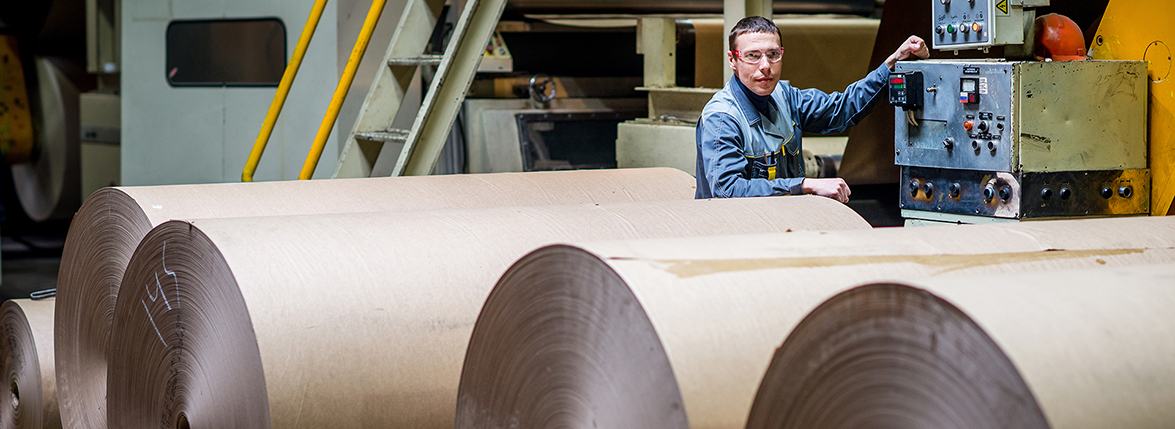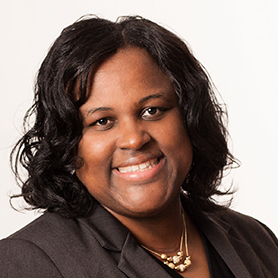Charmaine Riggins: The power of communication
As Former Chief Executive Officer (CEO) at Loparex, a global supplier of film release liners, Charmaine Riggins is a firm believer in the power of communication. She talks to dss+ about how developing a wide range of skill sets, open conversations and spending time on the shop floor offer a recipe for success.


Charmaine Riggins
CEO at Loparex
Q.
Your professional path to becoming a chief executive officer (CEO) has been wide and varied. What was your starting point?
I certainly didn't aspire to be a CEO when I was younger. In fact, I was an introvert and didn't like being the centre of attention. As the first person in my family to go to university, where I graduated in chemical engineering, I was simply excited to have a job in a profession where I could focus on problem-solving and developing solutions for different marketplaces. It was when I set up a small real estate business with my husband, that I got interested in the business side of things. I developed this further by taking a Masters in business administration. I saw this as an excellent opportunity to create different skill sets and transition from technology to business in a corporate setting. I took on many roles, including marketing, sales, finance, operations, customer engagement, customer service and human resources. There wasn't any particular plan behind taking on these roles; I was just happy for the opportunity to learn. It was during my time in Europe that I started learning more about business management. I gained an overarching understanding of how different business functions and areas connect - equally, coming up with solutions when they didn't connect. I began to see the possibility that becoming a CEO one day could be an option for me.
"Listening and being genuinely interested in people shows a willingness to learn. That for me is at the heart of good leadership."
– Charmaine Riggins, CEO at Loparex
Q.
Having built up an impressive portfolio of skills, what would you say is vital to good leadership?
When I look at leading organisations or high-performing teams, it's all about having conversations, discussing and figuring out together how to cultivate that winning mentality. It's only when you start having a discussion with an individual instead of talking at them that you change the entire dynamics. Looking back, I often got caught up in how I thought I should act and whether or not I was polished enough compared to others. However, I soon realised you have to be yourself; leadership has to be authentic. For me, that's about having conversations and helping people thrive and win.
Slowing down, being patient and listening to what people say are also essential. Equally, listening to what people are not saying and taking note of body language. People respect and trust you differently, so how you earn that respect and trust will also differ. Listening and being genuinely interested in people shows a willingness to learn. That for me is at the heart of good leadership. It's not the case when you get to the top that there is nothing left to learn; there's always something to learn. When involved in new partnerships and transforming the business culture, you must be open to doing things differently.
Q.
As someone heavily involved in international business development, how important is it to cultivate a global culture and how best is it achieved?
As well as good leadership, a strong culture that focuses on diversity, inclusiveness and employees feeling they belong is vital. Stakeholders demand it and new talent expects it. For me, a fundamental cornerstone of any global organisation is clear communication. This not only applies to strategy or targets, it's also about clearly communicating roles and responsibilities. How do you delegate authority, or how do you become more nimble? Many organisations don't take the opportunity to step back and figure out how to communicate and what impact it can make. For example, I quickly learned about different perspectives when I lived in Europe. Coming from an American multinational company and sitting in front of colleagues from all over Europe, I knew it was important to respect different cultural backgrounds, be mindful of how I came across to them, and make sure regional and local teams could use their voices. People need to feel listened to and know they can influence outcomes. For any international organisation, communication is key to ensuring that regional goals align with global goals. Importantly, reaching those goals involves everyone understanding an organisation's central values around issues such as a safe and healthy working environment or being customer-focused. It's about communicating those values with integrity and respectfully. It also has to be a two-way process. Listening to feedback and celebrating individual successes and milestones, no matter how small, shows you care as an organisation. It's an approach that taps into the true value of communication.
"Without a culture of safety then nothing else can work. Without safety, there is no sustainability or innovation and your risk profile will deteriorate."
– Charmaine Riggins, CEO at Loparex
Q.
How integral are safety, sustainability and risk management to business success?
Firstly, without a culture of safety then nothing else can work. Without safety, there is no sustainability or innovation and your risk profile will deteriorate. Confidence between the organisation, its partners and its customers will also fall along with your performance. So I firmly believe safety has to be first when it comes to creating a sustainable business and positively impacting the community. While sustainability rules and regulations differ between regions and countries, companies should review their sustainability programmes. However, organisations must focus on what sustainability means looks like for them. As a company in the manufacturing sector, for example, we are focused on innovation, customer solutions, and how we impact our overall environment. So we are trying to look at the circularity of our products, how to recycle, zero waste, eliminate solvents and use cleaner technology.
We have also put in place targets, which we are beginning to share with our customers; we see it as a working partnership where we can share the same sustainability values and ambitions. Having that direct conversation with partners and customers on sustainability issues is essential. If you are honest with customers and they understand why change is happening, they are often willing to give you a more generous share of their wallet. It's critical that we are all signing up to these goals because it's the right thing to do.
Q.
As a people person, how can organisations improve their approach to human assets?
Human assets are the cornerstone of any organisation. Following the Covid pandemic, we saw how the labour pool shifted as people's professional ambitions and expectations changed. So we had to think differently about how we hired, how we developed people and what resources we needed to flex. Recognising and creating a culture where people were excited to come to work became more important than ever. Despite these challenges, I am happy that people took a step back to decide what they really wanted to do. Particularly with new hires, it's important to have those conversations about different training opportunities so they can see what their career could look like by creating a roadmap. As I have proved with my career path, there is vast depth and breadth to explore within the corporate world. If we take human resources (HR) alone, there are many different roles within it, from payroll to talent acquisition to learning and development. Allowing people to see other career paths within the company is critical so they don't necessarily need to leave. It's all about highlighting those opportunities, so employees remain engaged, enthusiastic and, above all, happy.
Q.
What would you say are the critical tools for success?
Clear communication has to be a priority. But it has to be meaningful and it has to be two-way. So yes, communicate on strategy and performance as this is necessary to drive results. But also communicate by paying attention and listening. For example, I make it a habit to travel to different sites, but I make it clear that I'm not there to have a big meeting. I'm there to work, to walk around on the shop floor to find out how things are going and what we could do differently to improve working lives. It also gives me an opportunity to let them know how valuable they are to the company and what their work means to customers and the supply chain.
Secondly, don't hide behind anything. Be transparent in everything you do. When things are good, recognise success and celebrate together. When times are tough, let people know. Explain the challenges and what solutions are being applied. When you're honest, people respect you much more and will go the extra mile required. Being transparent also helps to drive through necessary change. An open and inclusive conversation often reveals areas where improvements can be made and, importantly, the people you can rely on to make those improvements.
Building and maintaining relationships both within and outside the company is also crucial. For example, a key theme internally this year has been around commitment to colleagues and our customers. From an external viewpoint, I make it part of my job to personally meet with key customers to learn how they are doing and ensure the partnership is maintained and aligned. Finally, don't create a long list of items to get through; you will quickly get bogged down. Go with the flow, focus on the critical and then move on. Above all, be yourself.
"Don't hide behind anything. Be transparent in everything you do. When things are good, recognise success and celebrate together. When times are tough, let people know."
– Charmaine Riggins, CEO at Loparex